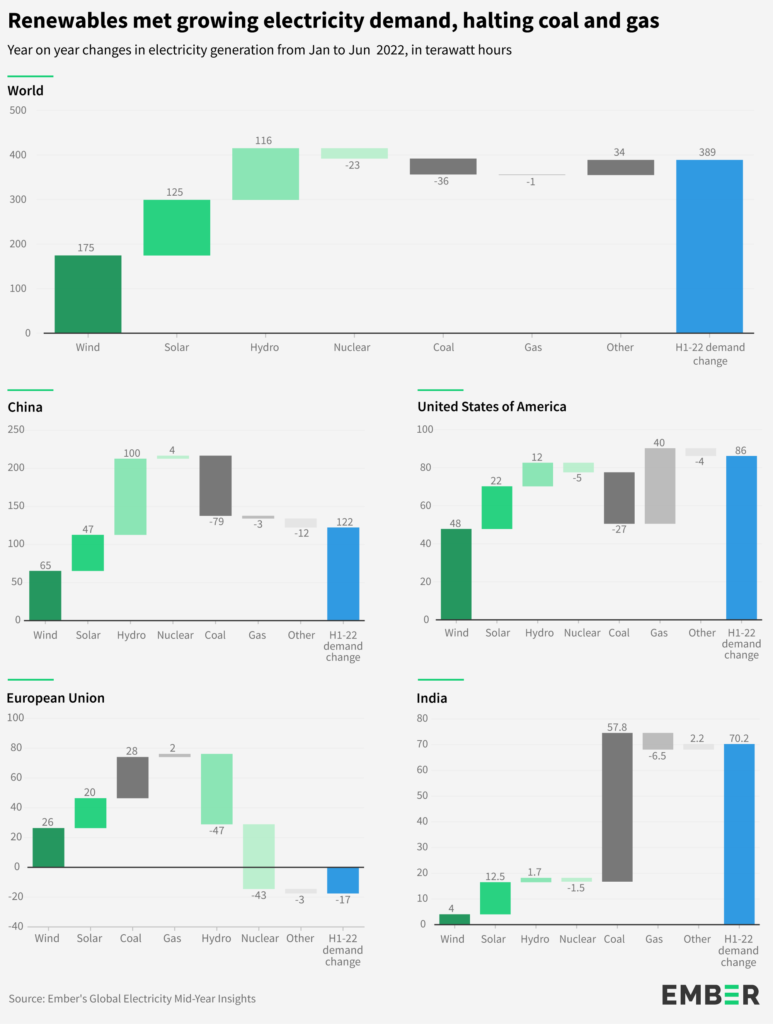
The rise in solar and wind generation met over three-quarters of the global electricity demand growth in the first half of 2022, according to a report from think tank Ember.
Electricity generation from solar PV increased globally by 125TWh in H1 2022, up 25% compared with the same period in 2021.
Try Premium for just $1
- Full premium access for the first month at only $1
- Converts to an annual rate after 30 days unless cancelled
- Cancel anytime during the trial period
Premium Benefits
- Expert industry analysis and interviews
- Digital access to PV Tech Power journal
- Exclusive event discounts
Or get the full Premium subscription right away
Or continue reading this article for free
Most of the rise in generation has been attributed to the increase in installed capacity, while other factors such as weather conditions have also contributed to the increase.
Overall, solar generated 619TWh during H1 2022, representing 5% of global electricity during that timeframe.
Furthermore, the growth of solar and wind generation in H1 2022 prevented a 4% increase in fossil generation and avoided US$40 billion in fuel costs, according to Ember.
“Wind and solar are proving themselves during the energy crisis,” said Malgorzata Wiatros-Motyka, senior analyst at Ember.
“The first step to ending the grip of expensive and polluting fossil fuels is to build enough clean power to meet the world’s growing appetite for electricity,” added Wiatros-Motyka.

Country-wise, China’s growth of solar and wind power reduced fossil fuel power by 3% instead of a 1% rise.
China’s electricity demand growth was stagnant in H1 2022, with a 3% rise year-on-year due to continued lockdowns in certain regions earlier in the year, but that was entirely met with renewables with solar (+47TWh) and wind meeting 92% of its demand increase and reducing coal consumption during that period, according to Ember.
However, of the four major markets outlined in the report – China, India, the US and the EU – India had the lowest electricity demand growth from solar and wind, which together accounted for 23%, as coal power rose to meet the strong rebound in electricity demand after the pandemic lows in 2021.
While the EU has been facing an energy crisis that has been amplified by the war in Ukraine, it prevented the rise of fossil generation by 16% to only 6% due to the increase of solar and wind power.
Globally, renewables generation – led by solar and wind – is getting closer to the tipping point of meeting all future electricity demand growth, which happened twice before – in 2015 and 2019 – as both years were below average demand growth.





